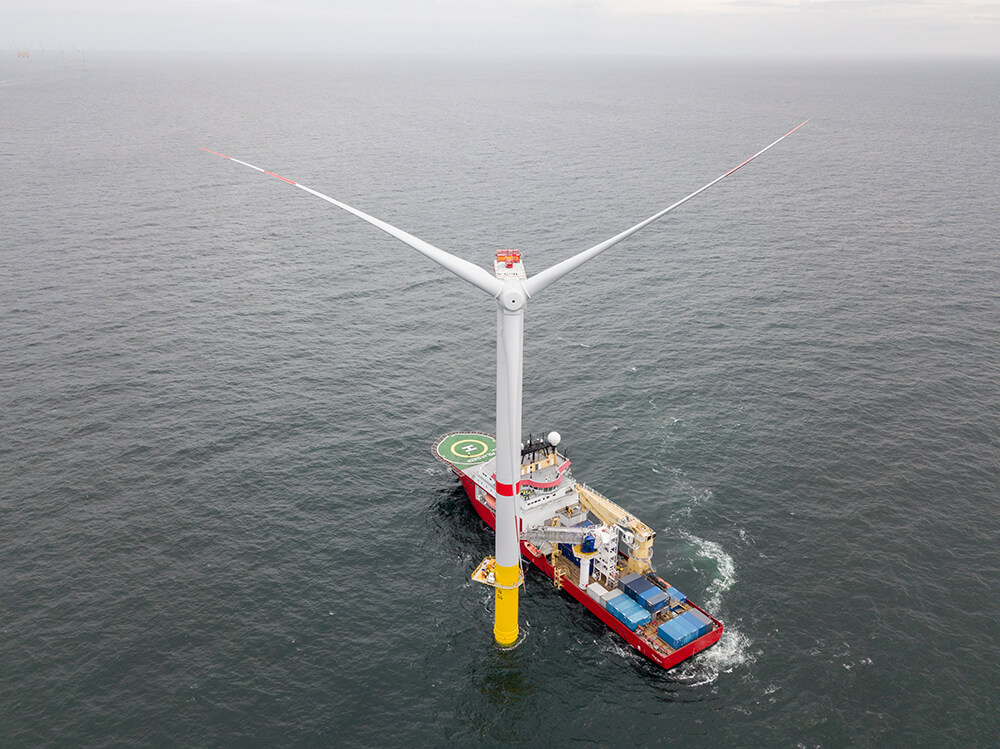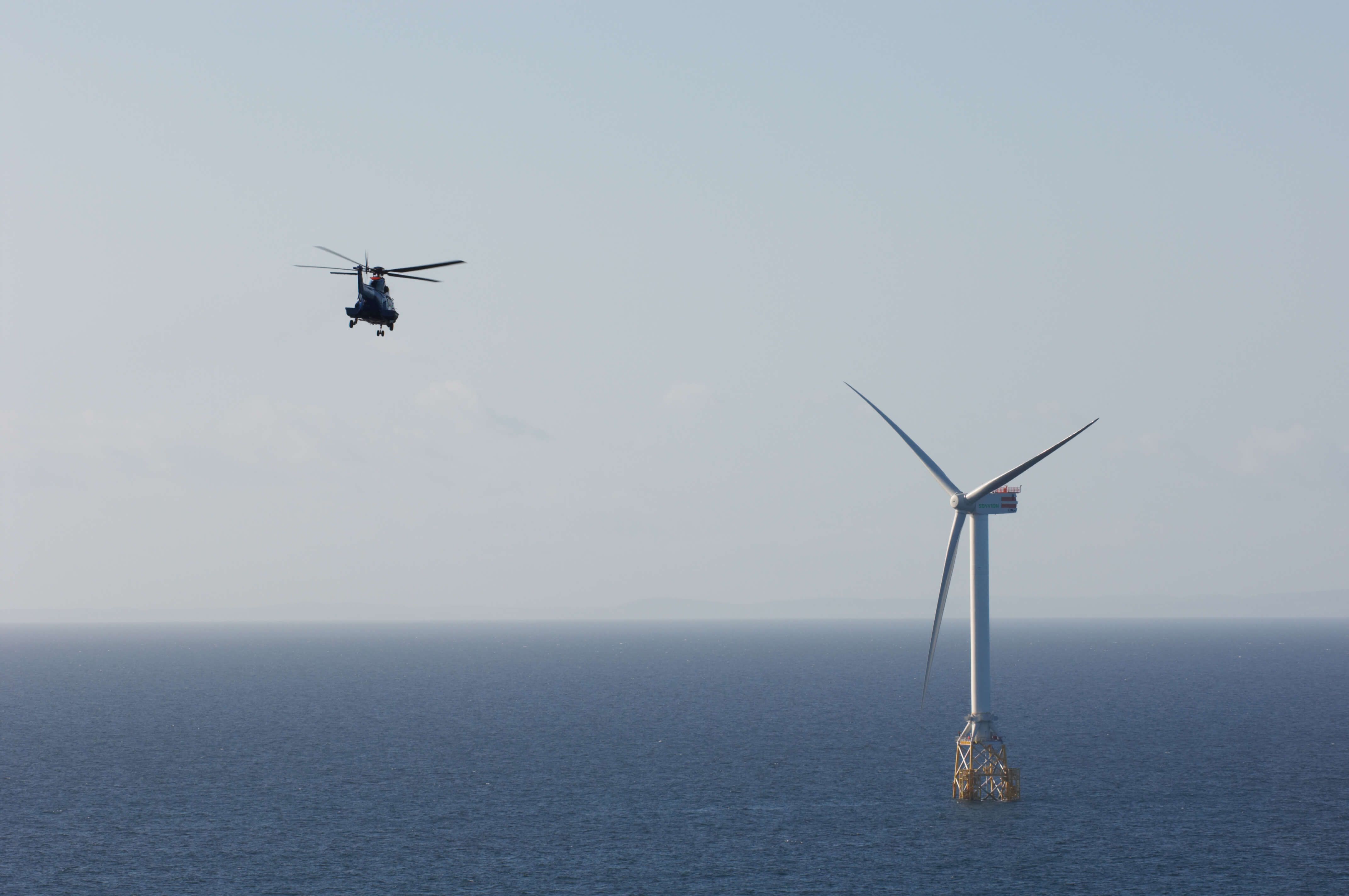By Lance Marram, CEO
Senvion North America

Offshore projects typically require more sophisticated project management. Given the large size of many offshore turbine components, it is ideal to produce them in coastal areas, close to harbors where they can then be loaded onto a ship for transport.
We are slowly beginning to consider harnessing the wind off of our coasts in North America by developing more offshore wind-power projects. To date, a small five-turbine wind farm and a handful of pilot projects have been developed in the U.S. The industry has been focused on setting standards, developing regulations, and auctioning offshore waters for potential development. While, in Europe, the offshore wind sector continues to grow and is successfully working on measures to reduce costs.
The industry standard for offshore turbines is a nominal capacity of 5 to 6 MW. In the near future, 10+ MW turbines are expected. While the United Kingdom, Denmark, and Germany are leading in offshore wind power, the U.S. is learning from such frontrunners. Most experts agree that in North America, the potential for offshore wind power means one thing: huge economic opportunities.
Offshore considerations
In recent years, wind farms in the UK and Europe have moved from 6 to 12 miles to 24 to 62 miles offshore – and further. This typically leads to project installations in deeper waters. No matter how far off the coast, the installation of offshore wind turbines requires special jack-up vessels and platforms. These platforms, and some of the vessels, are equipped with movable legs that can be extended as required. They are typically fitted with a crane, and also offer a large deck space.
In key markets, mainly mono-pile and jacket structures are used for shallower waters. In addition to jackets, which will probably be used as a default in the U.S., tripod foundations (both based on concepts used by the oil industry) are found in shallow and deeper waters. Floating structures come into play at a water depth of 50 m and beyond. They will enable the industry to unlock new offshore opportunities far off the coast and in deep waters in the future. For example, this will be relevant in California and Hawaii.
Senvion has adapted its 6.2M152 wind turbine to the floating offshore foundation developed by the EolMed consortium. The French Environment and Energy Management Agency has awarded EolMed the installation of four Senvion 6.2M152 turbines in the Mediterranean Sea for the first floating pilot wind farm in France, which is set for installation and commissioning in 2020.
The foundations, particularly in deeper waters, are a major cost factor for offshore wind farms. One-third of the offshore project costs are the foundations, the electrical system, and turbine installation. However, with the technology becoming more mature, the UK and Europe have seen significant price drops over the last years and, the industry in general is expecting costs to continue to fall.

Senvion has adapted its 6.2M152 wind turbine to the floating offshore foundation developed by the EolMed consortium. Up to four turbines are set for installation in the French Mediterranean Sea in 2020. The 6.2M152 features a rotor diameter of 152 m, which corresponds to a larger drivetrain, and enables the 6.2M152 to generate more cost-efficient offshore energy.
Offshore will be big
In addition to the complex foundation structures, offshore wind turbine components are big, heavy, and powerful.
As the components are exposed to heavy wind and salt water, they have a standardized coating for offshore use that prevents corrosion. Offshore turbines are also equipped with redundant components and a highly sophisticated monitoring system that helps avoid unnecessary downtime.
Given the sheer size of many offshore components, it is ideal to produce them in coastal areas, close to harbors where they can be quickly loaded onto a ship.
Most companies charter jack-up vessels to build offshore wind farms. Offshore projects require more sophisticated project management. The overall construction takes much longer than onshore. For a 100-MW onshore project in the U.S. the construction process takes about eight to nine months, whereas two to three seasons are required to complete an offshore project.
The offshore construction process is mainly constrained by wave height and wind speed. The installation of the turbines however may not necessarily take longer but the weather risks, of course, are higher than onshore.
Offshore opportunities
Offshore wind provides new economic opportunities for coastal areas – particularly in the U.S. where there are an increasing number of commitments to reduce carbon-dioxide emissions and provide clean, cost-effective energy. Wind-power projects off the coast can make use of the large amount of free, untapped space, while being sited close enough to existing substations and transmission infrastructure.
The need to manufacture components close to the place of shipment opens up potential economic opportunities and benefits for a whole range of local companies and coastal communities. For example, oil and gas industry suppliers can find a new niche by serving the offshore wind segment.
“The offshore wind industry’s economic potential has often been considered just out of sight on the horizon, much like how operational turbines themselves appear from coastlines. But the fledgling offshore wind industry is finally reaching maturity, promising gigawatts of clean energy and billions in economic opportunity,” writes Silvio Maracci of Energy Innovation in a Forbes blog post published last July.
Interest in offshore wind power is growing, and this is particularly apparent in the United States, where offshore investors and developers are closely observing the market.
Filed Under: News, Offshore wind




